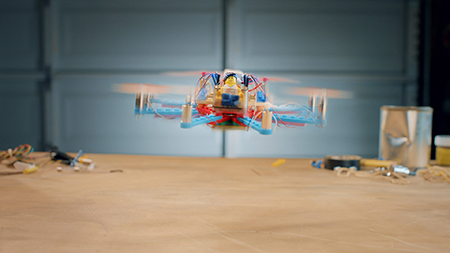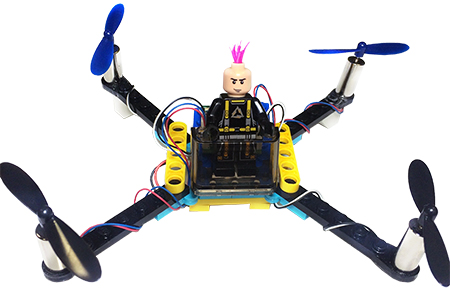Startup Soars with LEGO Drones
-
-
slice.mit.edu
- 1
Filed Under
Recommended

Like many kids, Amir Hirsch ’06, SM ’07 grew up playing with LEGOs. But unlike many adults, Hirsch is still playing with LEGOs as part of his job as CEO and co-founder of Flybrix. Started in 2015, the company sells kits for kids and adults alike to build their own reusable drones out of LEGO bricks. “It lets you tinker around with LEGOs, come up with a design you like, and see it fly.”

But what goes up must come down. The average Flybrix drone can stay up for five minutes. “Most of the time when I’m flying something, people ask that I crash it into the wall,” said Hirsch. “Because they all want to see it shatter into a lot of pieces.” All of the kit’s pieces can be reused to build another drone.

To date, Hirsch has only lost one drone. “I flew one that’s just above the white board [of our office]…it’s not accessible unless you take down the wall.”
In addition to the LEGOs, Flybrix kits come with all the parts necessary to build a drone and make it fly including a fully routed Arduino board, LiPo battery, and motors.
Learning opportunities abound. Builders gain insight into the aerodynamics of the drone’s fan, the electromechanics necessary to control a motor, and the basics of flight including balance and feedback. According to Hirsch, such concepts become much clearer when actually building a drone from hand. “You really feel the feedback system trying to keep it stable,” he says.

In 2016, the company sold more than 8,000 drone kits online and hopes to be in many national retail chains this December. While they primarily target kids 14 and older, Hirsch says he expects interest from other areas. “I bet you that retired pilots are our best demographic.” Flybrix has sold nearly 500 units to school systems around the world including many in STEM-focused school programs in Australia.
This is not Hirsch’s first startup. In 2011, he founded Zigfu, which received startup funding through Ycombinator and built an application programming interface (API) to aid developers in motion games and gesture user interfaces. Prior to that, he founded an educational iPad app company.
He recalls advice from an MIT alumnus as integral to his career, even before he caught the startup bug. “You have to think about building up a market approach for how to get customers…and how to use technology to build a defensible position,” he said. He summarized the conversation in a 2013 blog post that was later picked up by Forbes. “Technology is not a prerequisite for business success, but marketing is,” he concluded.








Comments
Ahuva
Tue, 08/01/2017 3:03pm
Awesome!!!!